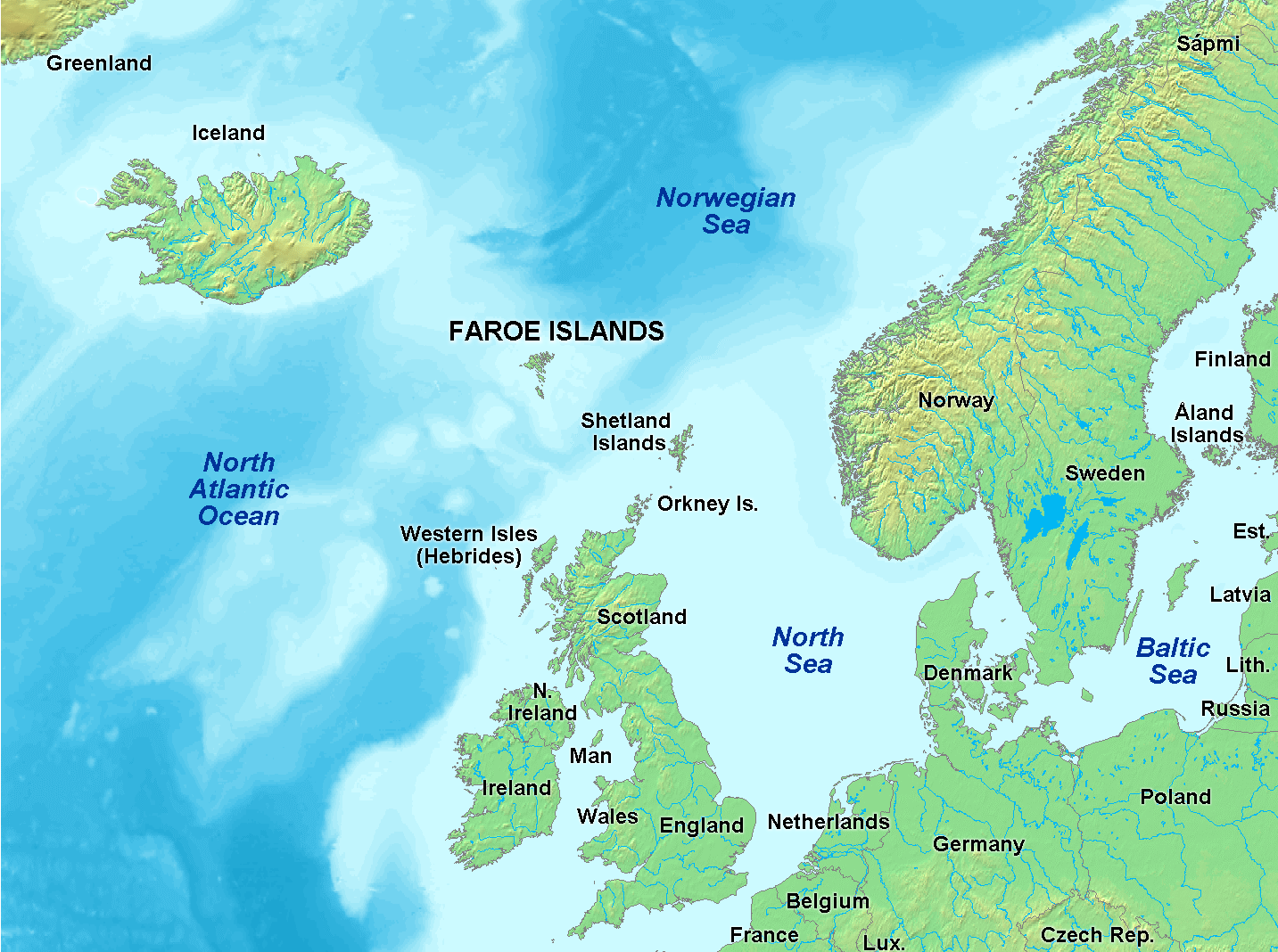Pre-Viking Vikings in the Faroes? August 27, 2013
Author: Beach Combing | in : Ancient, Medieval , trackback***Special thanks to PGR, Chris and Wade for signaling this***
Beach has never hidden his dislike for the Vikings and so was particularly happy to hear that Faroe, those lonely islands, between Shetland and Iceland are having their history rewritten (or rather their archaeology because history was in short supply back then). Orthodox history says that the Vikings had their population explosion or their pagan crusade or their three-hundred-year temper tantrum (or whatever it is that puts you in a boat with the intention of burning books) c. 800 (though even that date has recently come under attack). In most parts of Europe they turned up like a group of Hells Angels, revving their bikes and clanking their chains. They roughed up the vicar, crashed the Women’s Institute tea party and generally made a nuisance of themselves, even asking for local placenames to be changed. However, in the North Atlantic, in Faroe, Iceland and Greenland they were virgin settlers. They turned up on these hunks of ice and peat, built their houses and generally had a fabulous peaceful time. It is not that they didn’t want to rape, hurt and kill locals, see what they got up to in Shetland and Orkney: it was simply that there were no locals to rape, hurt and kill. So they began to hurt and kill each other and populated the landscape with supernatural creatures that did much the same.
Or did they? Drum roll… Recent research appearing in the Quaternary Science Reviews details some digs on Faroe at Á Sondum on Sandoy that show that the Vikings did not get to the archipelago first. Not much has been found, but it is evident that peat was being prepared and burnt and this activity has been dated 300 AD to 500 AD. Who were these poor souls? (Poor because they later met the Vikings in a Hoy-get-off-your-land mood). Well, there has been some writing about possible earlier inhabitants of northern Atlantic islands and roughly speaking, four sets of candidates emerge.
i) British-based peoples moving north from Caithness, Orkney and Shetland.
ii) Scandinavia-based peoples heading west: the Vikings before the Vikings.
iii) Amerindians (the very questionable fringe this) being driven down from Greenland by worsening conditions in the north.
iv) Irish monks undertaking peregrinatio pro Dei amore, throwing themselves in the waves for the love of God, according to a custom that we’ve previously detailed here (follow the link).
And the correct answer is… Amerindians are almost certainly out. The dating looks early for Irish monks and there seems too much evidence for a solitary hermit or two. We are probably back to an earlier wave of emigrants up from Shetland or across from Bergen. Any other ideas: drbeachcombing AT yahoo DOT com
And Beach will place a bet for anyone willing to punt: the natives didn’t marry peacefully into the family of Viking settlers and we’ll soon find that Iceland had some pre-Vikings too. Wonder what happened to them?
31 Aug 2013: Nils writes: Could it be that they were fishermen? In later times during the middle ages and Renaissance, fishermen seem to always be the vanguard of settlement–northern European fishermen pop up along what is now Cape Cod before any Englishmen show up in boats, and apparently even had a settlement there. So could it be that prior to the big population boom of the 7th-8th centuries, fishing boats were making a base of operations in the Faroes? And just for fun: perhaps they were stranded Greeks, hunting for Ultima Thule….. An old friend of this blog, Leif writes: Your page begins ‘Beach has never hidden his dislike for the Vikings’. The good doctor is always entitled to his opinions, but he might like to know that the Norwegians use two entirely separate words for the English term. ‘Norrønafolk’ means ‘old norse’ and refers to the Scandinavian population of that era. ‘Viking’ refers only to the raiders. At any given point in time, only a small percentage of the old norse were raiders, though in difficult times, a vocational change was always a possibility. It’s fair to say that the history being rewritten is not the historical tradition of the old norse. The opposite is closer to the truth. The recent archeological findings confirm saga tradition. (Forgive this layman for a Wikipedia source, school started this week. http://en.wikipedia.org/wiki/Færeyinga_Saga ) The Færeyinga Saga exists only in fragments. The excerpt found in Ólafs saga Tryggvasonar begins: ‘There was a man named Grímr Kamban; He first settled in Færøy. But in the days of Harold Fairhair [Harald Hårfagre] many men fled before the king’s overbearing.’ ‘Grimr’ is an old norse name. ‘Kamban’ is not. Ólafs saga Tryggvasonar implies that this man came from the British Isles, not from Norway. Quoting from Wikipedia (again, sorry) ‘The text says that many men fled from Norway when Harald Hårfagre was king there. But it also says that the isles were settled before that (possibly for hundreds of years, although most historians do not think so).’ They do now. Thanks Leif and Nils!



